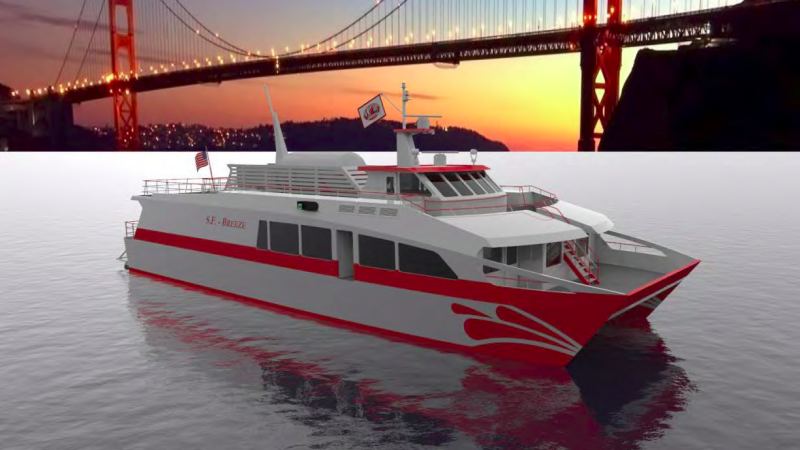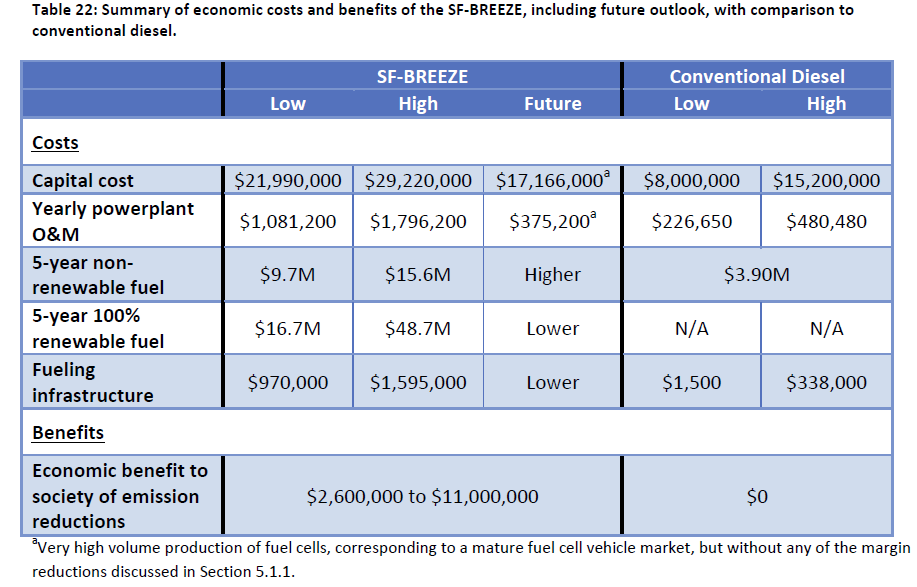Hydrogen-Fueled Ferry? Cost is the Only Obstacle

Researchers at Sandia National Laboratories have recently completed a feasibility study for a high-speed, hydrogen-fueled ferry for the San Francisco Bay area – and they determined that the only real obstacle is cost.
The Sandia team, working with the Maritime Administration, Elliott Bay Design Group, the Coast Guard, ABS, Port of San Francisco and the ferry operator Red and White Fleet, found that there were no significant technical or regulatory obstacles to a hydrogen-fueled fast ferry in the Bay Area.
The impetus for the study came from Thomas Escher, the president of Red and White Fleet. Escher asked whether it might be possible to fully eliminate point-source emissions from passenger vessel operations, as ABB has done with battery-powered ferries or as several European firms have achieved with hydrogen-powered tour boats.
Most previous attempts have been for smaller vessels with lower workloads, but SF Bay ferries have to be available for constant duty on 50 nm round trips and at speeds of up to 35 knots. Diesel-powered vessels have satisfied these specifications for decades, but Escher wanted to know whether a zero-emissions vessel could as well.
The design group determined that liquid hydrogen storage, fuel cell electrical generators with AC final drive, and a catamaran hull should be the basis for such a fast, high-workload application.
ABS and the Coast Guard looked at the properties of liquid hydrogen and determined that IGF Code standards for LNG fueling would work as a starting point for regulatory guidance, along with standard provisions for small ferries and high speed craft.
With operational needs, equipment and regulatory requirements in hand, EBDG created a full design for a vessel meeting all specifications. They noted that in addition to performance on par with a diesel vessel, the vessel would have faster throttle response when maneuvering, plus reduced noise and no diesel exhaust odor for passengers.
Whether the ferry would actually contribute to greenhouse gas reduction overall is a separate question and would depend on the shoreside fuel supply.
Conventionally available hydrogen derived from natural gas is energy- and CO2-intensive to produce, and the relatively heavy ferry would consume a lot of it – leading to a worse emissions profile than a conventional diesel vessel. However, using renewably-sourced hydrogen, the vessel would cut greenhouse gas emissions by 75 percent.
The only significant obstacle the study found was cost. The initial price of the ferry itself could run to three times that of a diesel ship, and powerplant operations and maintenance could be as much as eight times as expensive as conventional main engines. Bunkering equipment on shore would run in the range of $1 million; bunkers would be more expensive than diesel for natural gas-derived hydrogen and many times more expensive for renewable hydrogen (below).

"Renewable fuel" refers to hydrogen produced using renewable electrical power (courtesy Sandia National Labs)
These factors will likely put off commercial viability until economies of scale bring down the cost of hydrogen fuel cells and renewably-produced liquid hydrogen; the researchers noted that if hydrogen-fueled cars gain acceptance, volume production of fuel cells could make the technology more cost-competitive.
